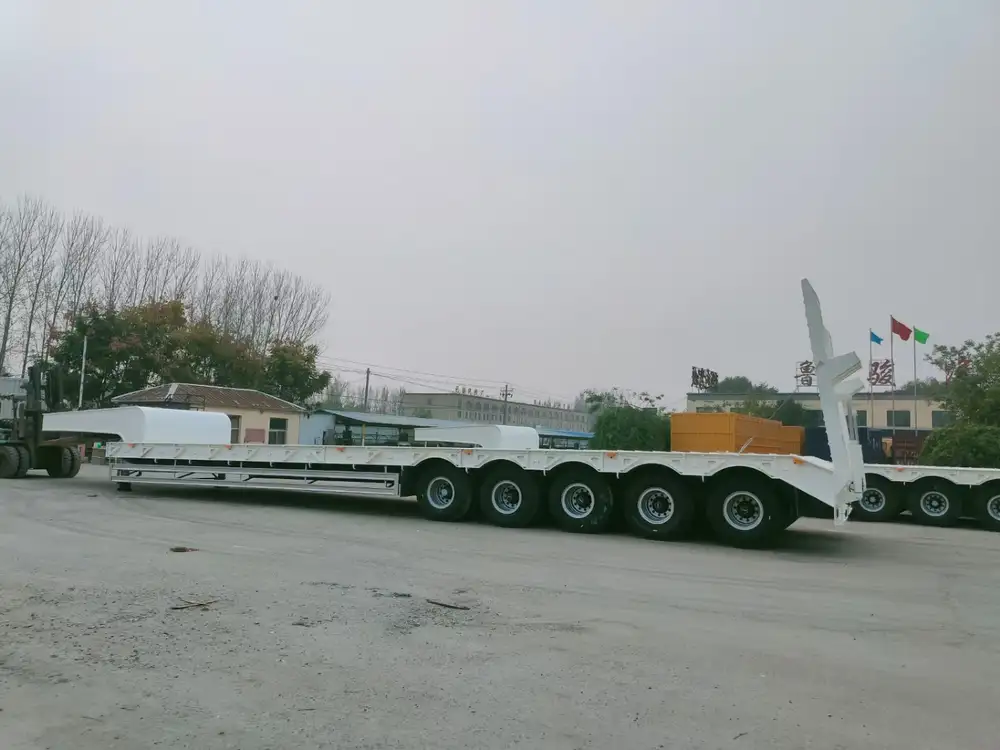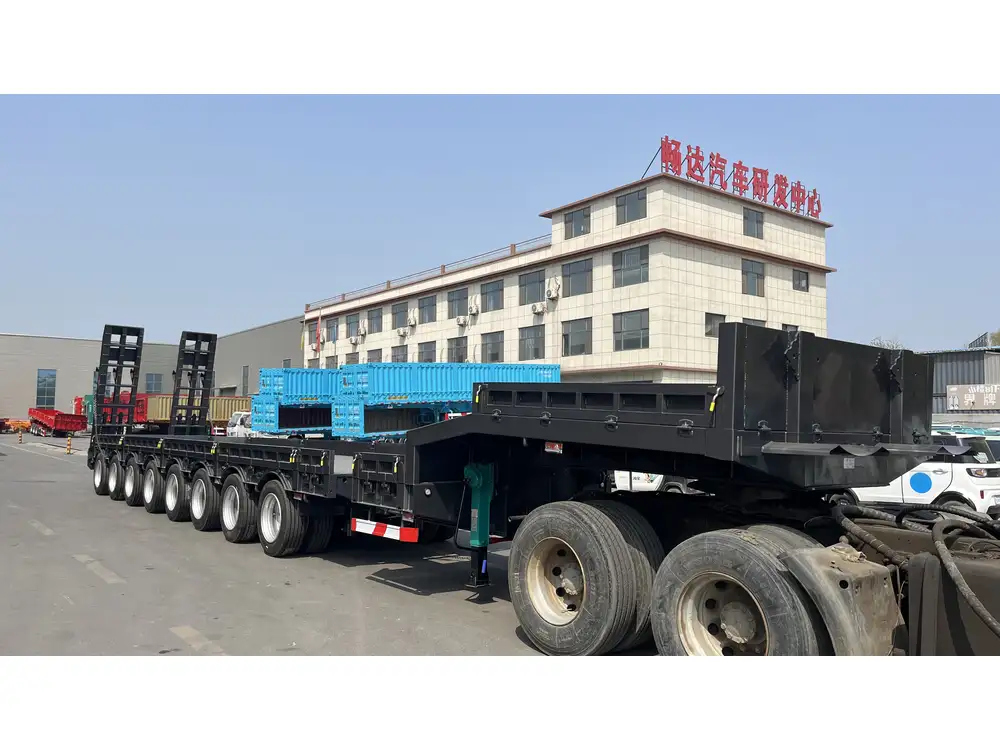In the realm of motorsport, the importance of a semi race trailer cannot be overstated. These expansive vehicles serve as a mobile command center, a safe haven for vehicles, and a hub for all necessary racing equipment. But, what exactly are the dimensions of a semi race trailer? Understanding these specifications is crucial for teams looking to optimize their transport logistics and trackside performance. In this article, we delve into the various sizes, configurations, and features of semi race trailers, providing detailed insights that can assist teams in making informed decisions.
Key Features of Semi Race Trailers
Structural Components
Semi race trailers can vary considerably based on their intended use and configuration. While dimensions can fluctuate, common structural elements include:
| Component | Description |
|---|---|
| Chassis | Designed for durability, typically made from steel or aluminum. |
| Walls | Insulated and often lined with materials that resist wear. |
| Floor | Generally constructed from plywood or aluminum to support heavy loads. |
| Ramp | Provides easy access for loading and unloading vehicles. |
| Roof | May be flat or peaked; important for storage height considerations. |

Common Sizes: Lengths, Widths, and Heights
Length
The length of a semi race trailer is a critical aspect, impacting both storage capacity and maneuverability. Standard lengths fall within the following ranges:
- 28 to 53 Feet: Most semi race trailers belong to this category, accommodating everything from one race car to multiple vehicles along with tools and spares.
| Trailer Length | Typical Use |
|---|---|
| 28 Feet | Suitable for single-vehicle transport |
| 40 Feet | Ideal for multiple vehicles |
| 53 Feet | Maximum cargo capacity and equipment |
Width
Width is a paramount factor affecting workspace and storage. Standard widths typically measure between 8.5 and 102 inches.
| Trailer Width | Description |
|---|---|
| 8.5 Feet | Common maximum width for highway use |
| 102 Inches | Optimal for larger vehicles and extra storage |

Height
The height of semi race trailers varies, but the average height often ranges from 13.5 to 14 feet, accommodating larger vehicles. However, assessing doorway (pegboard) clearances and internal vertical space is crucial for efficient packing.
| Trailer Height | Implications |
|---|---|
| 13.5 Feet | Standard for most commercial spaces |
| 14 Feet | Generally used in specific configurations |
Types of Semi Race Trailers
Understanding different types of trailers can significantly affect your decision depending on the racing requirements.
Enclosed vs. Open Trailers
- Enclosed Trailers provide protection against weather and theft, making them essential for expensive cars.
- Open Trailers are less costly options primarily for transporting cars without requiring storage security.

Gooseneck vs. Fifth Wheel
- Gooseneck Trailers feature a hitch that mounts to a rail in the truck bed, allowing for improved maneuverability.
- Fifth WheelTrailers attach to the rear axle of a vehicle, offering better stability during transit.
Specialty Trailers
- Stacker Trailers: Designed for multiple vehicle transport, these can carry a car above another.
- Living Quarters Trailers: Equipped with amenities for the crew during weekends at racing circuits, including sleeping areas and kitchens.
Calculating Load Capacity

Understanding Weight Distribution
Proper load distribution is vital for safety and to avoid damage during transport. A semi race trailer’s gross vehicle weight (GVW) capacity must not exceed its rated limits. Semi trailers generally provide a GVWR ranging from 10,000 to 26,000 pounds.
Load Capacity Calculation
| Factor | Description |
|---|---|
| Empty Weight of Trailer | Weight without cargo, can vary based on materials |
| Maximum GVWR | Manufacturer-rated maximum weight load |
| Payload Capacity | Maximum weight of equipment and vehicles allowed |
To calculate the payload capacity of a trailer, subtract its empty weight from the GVWR:
[ \text{Payload Capacity} = \text{GVWR} – \text{Empty Weight of Trailer} ]Including Additional Equipment
When calculating weight distribution and overall load, don’t forget to factor in additional equipment like spare tires, tools, or pit necessities, which can add significant weight.

Trailer Configuration and Customization
Custom Features for Enhanced Functionality
Many manufacturers offer custom configurations. Consider designs that include:
- Pull-out Ramps: For easy access to the inner sections.
- Multiple Levels: Whether stacking vehicles or optimizing storage, multi-level configurations maximize space.
- Lighting and Electrical Systems: For nighttime operations or event setups.
Planning for Future Needs
As your racing team grows, so could your trailer requirements. Consider customizing for future scalability to avoid the need for repeated investments.

Choosing the Right Trailer
Key Considerations
Assessing Your Specific Needs
- Number of Vehicles: Evaluate the number of vehicles you regularly transport.
- Size of Equipment: Consider additional items you need to carry along with cars.
- Transport Frequency: Usage intensity can guide your choice between different classes of trailers.

Budget Constraints
While looking for cost-effective options, keep in mind that cheaper trailers might incur higher operational costs over time, particularly in repairs or inefficiencies.
Common Mistakes to Avoid
- Underestimating Cargo Requirements: Always anticipate increasing needs before selecting a trailer; a larger investment today is better than multiple smaller purchases later.
- Ignoring Clearance Requirements: Not all race tracks and pits have the same overhead space; assess your common venues.
- Neglecting Weight Issues: Verify the weight limits to avoid putting your trailer and vehicles at risk.
Conclusion: The Indispensability of the Right Dimension
The size and configuration of a semi race trailer are imperative for mobile racing teams. From ensuring secure transport for high-value vehicles to accommodating necessary equipment and facilities, dimensions play a central role in a racer’s success story. Understanding these specifications, their implications, and how they align with your operational needs can significantly boost performance on the racetrack while enhancing your team’s logistical efficiency.
As the motorsport industry continues to evolve, so too will the requirements for semi race trailers. Always observe trends, innovations, and advancements in technology that can further elevate your racing experience and operational mechanics.
For specialized advice tailored to your specific requirements, consult with experts in the trailer manufacturing industry. Investing in the right trailer today could mean the difference between victory and defeat tomorrow.



